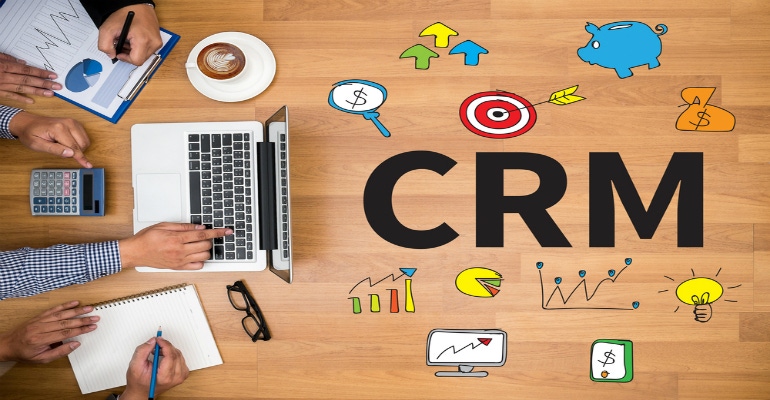Companies must know how to effectively integrate systems of record after acquisitions.
May 31, 2019

Despite the fact that global M&A activity slowed during the third quarter of 2018, last year registered as the second highest global value on record: $2.72 trillion across 13,575 deals.
The highest global M&A value ever – $2.94 trillion – was posted in 2007, and word on the street is that 2019 could be even bigger.
With M&A activity on the rise, it’s about time companies figure out how to effectively integrate systems of record post-acquisition. This is especially true when it comes to merging CRM systems. If done incorrectly, companies could lose millions in lost deals.
Aaron Romigh, chief operating officer of Miller Heiman Group, a global sales performance company, is no stranger to this area. Some might even consider him an expert on the topic, as he helped Miller Heiman Group merge 15 CRMs into one following a series of acquisitions about three years ago.

Miller Heiman Group’s Aaron Romigh
What considerations do companies need to make before beginning this process? Romigh sat down with us to share some of his wisdom and insight.
Channel Futures: Why did Miller Heiman Group have 15 CRM systems? What challenges did this pose for the organization?
Aaron Romigh: Like many companies today, we went through a series of strategic acquisitions, with multiple legacy brands placed under the Miller Heiman Group logo. With those brands came a series of systems to manage post-merger.
Before merging CRM systems, our sellers had to call their sales leader to give an opportunity update. Next, they’d call their operations team lead to provide new timelines. From there, they’d update the client, build a new quote and send that quote when any small change needed to be made.
This took a tremendous amount of selling time away – we estimated about 50% at one point – and made the job of our sellers into an administrative burden. That’s not where you want a seller spending time. You want to free them up to chase revenue and correspond with clients.
We also saw a lot of siloed activity happening post-merger. Work was not managed centrally or in a consistent way. Most of our sales leaders avoided our CRM systems and managed via forecasting calls and a series of Excel spreadsheets. Fifty-odd Excel spreadsheets globally is not an effective way to run a world-class business.
We needed a better way.
This is why we didn’t just adopt a CRM. We changed our entire back-office process flow and attached it to our CRM launch. We integrated legal, finance, tech, ops and sales processes through a network of systems all connected to our new CRM. This took about 24 months from start to finish.
CF: What did you learn during this process of merging CRM systems?
AR: The takeaways for other companies merging CRMs is that change is hard. Sales organizations must center change around a shared methodology. At the end of the day, CRMs are often just big databases that are used as compliance tools. Sellers comply with data entry that is rolled up to a sales manager and leader and eventually the organization. Without a strategic approach to CRM use, it’s really just a database. It makes a sales leader and an executive’s job easier.
Thinking about sellers and how we can positively impact their results is in our DNA. This is why we wanted to build something that helped a seller see a CRM as part of their everyday work to close a deal — not something their sales leader made them do. That’s the next wave of CRM — CRM 4.0.
This next era, CRM 4.0, comes from an industry shift toward science-based selling rather than …
… the emotion-based relationships that founded CRM 1.0. This means sellers are in need of different tools. They need technology that puts them ahead of deals. They need better forecast accuracy. They need mobile-first design. Ultimately, sellers need a tool that enhances their training, bringing sales strategies into focus with data and analytics.
CF: How critical is a CRM system for a modern enterprise?
AR: A traditional CRM is nothing more than a system of record. It won’t help salespeople sell more. It’ll simply help sales organizations report on selling.
To get to the core of sales and help the seller manage the client relationship to close a deal, companies need solutions driven by methodology. After all, how do you know what one person’s sales stage means if you aren’t tied to a common set of actions?
To get sales organizations to embrace sales technology, it must be backed by proven sales methodology that guides the actions of sellers on the ground and helps sales reps improve their win rates. Two, three or four different CRM systems won’t solve this problem. Sales organizations need tools that they can add to their CRM or use standalone that will use data backed by analytics to help sellers improve win rates.
CF: What should companies be looking for when selecting a new CRM system?
AR: Before you decide to invest in a CRM, I’d encourage every sales leader to have a consistent, repeatable, data-driven point of view on how to close a deal. If they don’t, a CRM is just an expensive spreadsheet.
The key is to find a tool that aligns around a sales methodology that the sales organization can live and breathe everyday. Data-driven sales technology aligned around a core methodology will deliver results every time.
We discovered it was almost impossible to merge Miller Heiman Group’s sales methodology into a traditional CRM, which prompted us to initiate the build of Scout. We wanted every seller action tied to CRM to be aligned to our methodology and aligned to closing a deal. Without that connection, your sellers are just filling out spreadsheets.
CF: Any other best practices you’d like to share?
AR: I would caution any sales leader not to buy a system without an implementation plan. Most CRMs are the same system they were 15 years ago when introduced to the market. Ask yourself, is this tool going to help you close deals? Can you take actions against the data in these tools?
Talk to your sellers, take into account their feedback and remember that selling time equals revenue. Creating a consistent, repeatable CRM process that is easy to absorb for sellers is key. Plan to train twice as much as you think you need to — and plan for it to take longer and cost more than you expect. It’s a lot like working with a contractor on a house plan for 20% contingency across time, cost and resources.
Sales and marketing executives know that data means everything when it comes to making critical business decisions. Shouldn’t we provide the same type of data to one of the organization’s most important assets — the sellers who talk to customers every day?
We like to say that you need to see the move that moves the deal. This is why I urge sales leaders to seek out technology solutions that serve as deal-closing machines within the organization. The critical tool that helps sellers sell more tomorrow isn’t going to be the same tool they’re using for forecasting and compliance today.
About the Author(s)
You May Also Like


